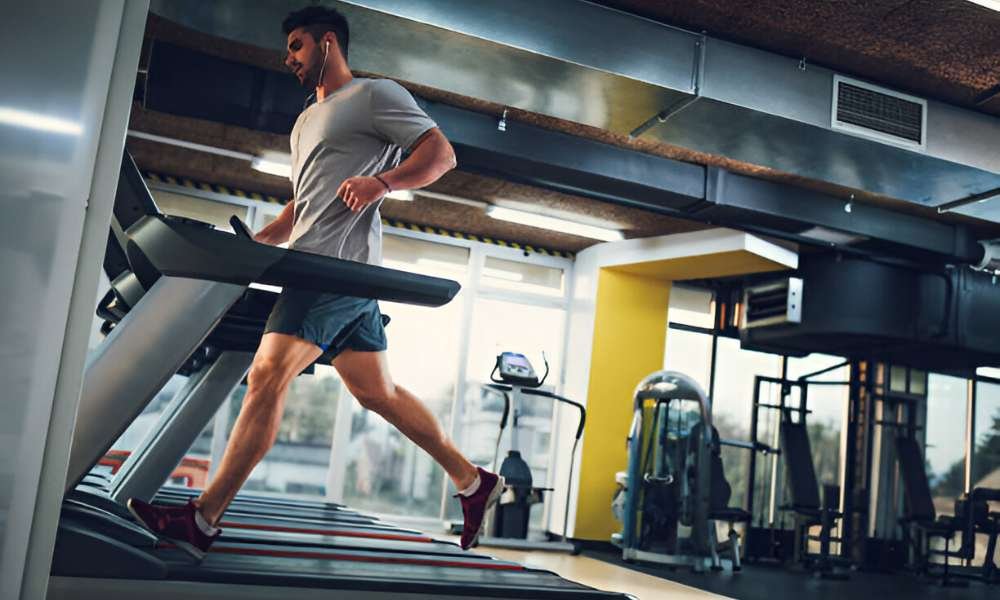A proper warmup on a treadmill before leg day is essential for maximizing performance and preventing injuries. Before jumping into squats, lunges, or deadlifts, your muscles, joints, and nervous system need to be fully prepared for the workload. A well-structured treadmill warmup increases blood flow, enhances flexibility, and activates key lower-body muscles, setting the stage for a more effective workout. However, the duration, intensity, and settings of your treadmill warmup should be optimized to avoid unnecessary fatigue. This guide will cover the ideal warmup duration, best treadmill settings, dynamic stretches, and common mistakes to ensure you start your leg day strong.
Why a Warmup on a Treadmill Before Leg Day is Essential
A proper warmup on a treadmill before leg day is crucial for preparing your body for intense lower-body exercises. Walking or lightly jogging activates key leg muscles, including the quadriceps, hamstrings, and calves, ensuring they are ready for heavier movements. Additionally, warming up reduces the risk of injury by increasing muscle elasticity and joint mobility, preventing sudden strains or sprains. Lastly, it enhances blood circulation and flexibility, allowing for better muscle performance, improved range of motion, and overall smoother workouts.
Optimal Duration for Treadmill Warm-Up
The ideal warmup on a treadmill before leg day depends on your workout intensity, muscle readiness, and personal preference.
- Short & Intense (3–5 minutes): If you plan to follow up with dynamic stretching, a brief warmup is enough to increase blood flow and prepare your muscles for activation exercises.
- Moderate (5–10 minutes): This is the standard warmup duration for most lifters, providing a balanced approach to increasing heart rate and loosening up the legs without causing fatigue.
- Extended (10–15 minutes): If you’re starting with heavy weights or feeling stiff, a longer warmup helps improve joint mobility, reduce tightness, and enhance overall performance.
Best Treadmill Settings for Warm-Up
Using the right treadmill settings for a warmup before leg day ensures effective muscle activation without unnecessary fatigue.
- Speed (3.0–4.0 mph): A brisk walk or light jog is ideal for increasing blood flow and gently warming up the lower body. Avoid sprinting, as it can drain energy needed for strength training.
- Incline (2–5%): A slight incline helps engage the glutes, hamstrings, and calves more effectively, mimicking the natural movement patterns used during leg exercises.
- Gradual Progression: Start at a lower speed and incline, then gradually increase intensity over a few minutes to prevent sudden strain on cold muscles.
Key Dynamic Stretches After a Treadmill Warmup
After completing a warmup on a treadmill before leg day, dynamic stretching further primes your muscles for optimal performance. Leg swings loosen up the hip flexors and hamstrings, improving mobility. Bodyweight squats activate the glutes and quads, mimicking movement patterns used in leg day exercises. Walking lunges engage multiple muscle groups, enhancing balance and stability. Lastly, hip circles improve hip joint flexibility, reducing stiffness and promoting fluid movement during squats and deadlifts. Incorporating these stretches ensures your body is fully prepared for an effective and injury-free workout.
Signs You’re Ready to Train
After completing a warmup on a treadmill before leg day and dynamic stretching, certain physical cues indicate that your body is primed for training. A light sweat suggests that your muscles have warmed up sufficiently, improving elasticity and reducing the risk of strains. An increased heart rate ensures better oxygen flow to your muscles, enhancing endurance and strength output. Additionally, loose and mobile joints mean that stiffness has been reduced, allowing for smoother movement patterns during squats, lunges, and other lower-body exercises. Recognizing these signs ensures you’re fully prepared to lift effectively and safely.
Common Mistakes to Avoid
While a warmup on a treadmill before leg day is essential, certain mistakes can reduce its effectiveness or even hinder performance. One common mistake is over-warming up and wasting energy—spending too much time on the treadmill can lead to fatigue before your actual workout begins. Another key error is skipping dynamic stretching after the treadmill—while the treadmill increases blood flow, dynamic stretches are necessary to fully activate the muscles and improve mobility. Lastly, using high incline or sprinting unnecessarily can tire out your legs before lifting, making it harder to perform heavy squats or lunges with proper form. Keeping your warmup balanced ensures you maximize energy and performance for leg day.
Read more: How to Make a Hand Bar Holder for Treadmill
Conclusion
A well-executed warmup on a treadmill before leg day is key to optimizing performance and reducing injury risk. By spending the right amount of time on the treadmill—whether it’s a short, moderate, or extended warmup—you can effectively prepare your muscles without exhausting them. Using proper treadmill settings, such as a brisk walking speed and slight incline, further enhances lower-body activation. Following up with dynamic stretching ensures mobility and flexibility for heavy lifts. Avoiding common mistakes like over-warming up or skipping stretches will help you get the most out of your workout. With a structured warmup routine, you’ll be ready to tackle leg day with strength and confidence.




